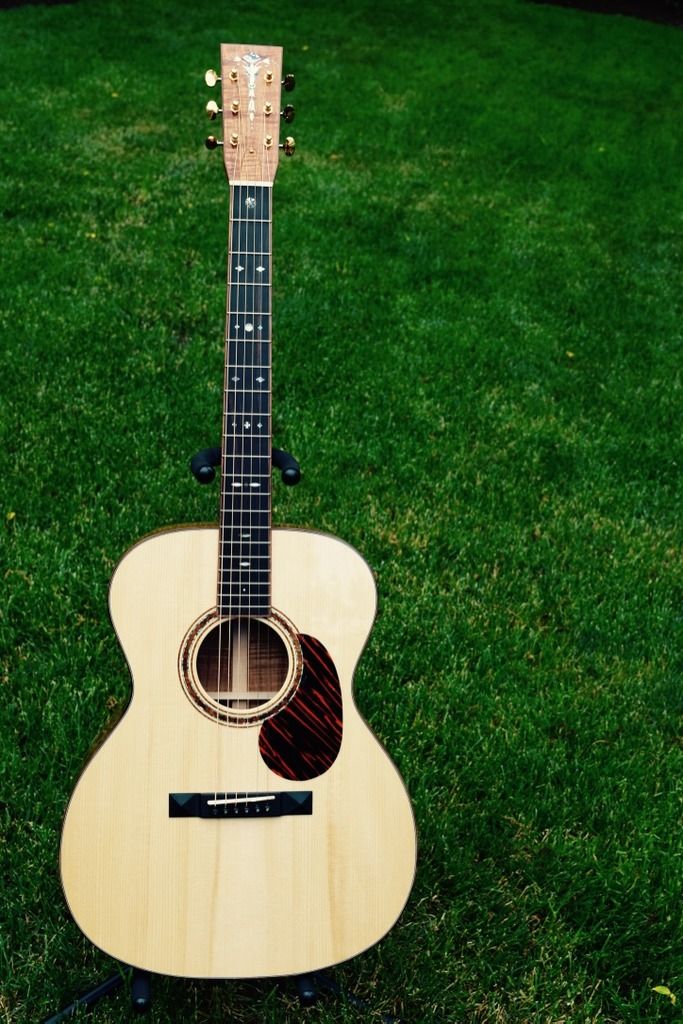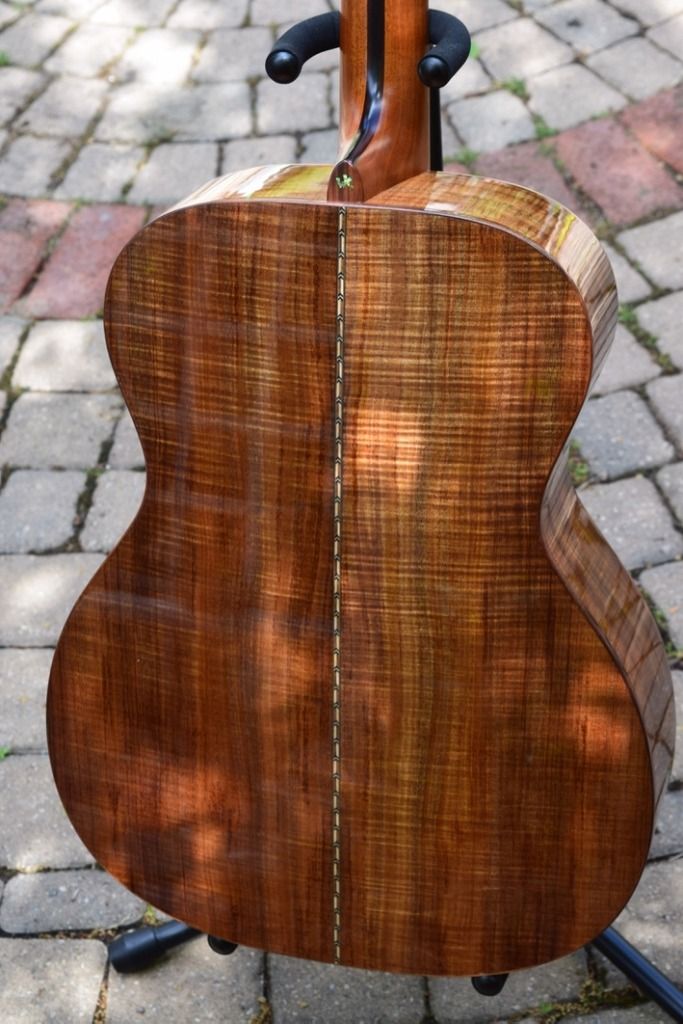
 |
|
#61
|
|||
|
|||
|
guitarro asked:
"Is damping factor equivalent to the velocity of sound through that material? " No. Velocity of sound refers to the speed of a compression wave in the wood. This is determined by the density and Young's modulus. Since the Young's modulus is higher along the grain than across it for all the woods I know of, and can be higher across a well quartered piece than a flat cut one, so there can be three different 'speeds of sound' in a piece of wood. Damping is a measure of how fast vibration energy is dissipated within the material. There are a lot of ways for this to happen, and they don't always have anything to do with either the Young's modulus or density. Oak and Brazilian rosewood can have very similar density and stiffness, but generally have much different damping. Western red cedar, one of the lower density softwoods, can have damping that's very much like BRW, one of the denser hardwoods. Even within a species the damping factor can vary as much as any other property, and can show very little correlation with other properties. That's why you have to measure the damping factor separately from the density and stiffness. Damping ought to affect the tone of an instrument somehow, and that's why we measure it. The relationship doesn't seem to be as simple or straightforward as you might think; low damping doesn't seem to confer a 'bright' sound, and it often seems to work the other way. As usual, with so many other variables in the mix it's hard to isolate damping to see what it actually does. Failing that all we can do is make lots of measurements and look for correlation over a large number of instruments. Is it worth the effort? Who can say; we'll know better when we actually have some answers. |
|
#62
|
|||
|
|||
|
"Even within a species the damping factor can vary as much as any other property, and can show very little correlation with other properties."
Mr. Carruth, are there properties, like a tight fiddleback curl, that do "seem" to correlate with these damping experiments? Just wondering what sort of empirical evidence you might have found, say curly quartered maple versus quartered plain, or koa, for instance. |
|
#63
|
|||
|
|||
|
The fact that damping CAN show little correlation with other properties doesn't mean it WON'T in some cases. Curly wood is less stiff along the grain than straight grained wood, and may also have higher damping. I don't have enough measurements of that to be sure, though. The point is that you can't always tell just by looking at a piece of wood what the stiffness, or density, or damping is. In the end if you really want to know what's happening with this stuff you have to make measurements. If you make a lot of them, you can sometimes start to see patterns, but there are a great many variables and only so much time to go looking at them.
|
|
#64
|
|||
|
|||
|
Quote:
Please feel free to PM me with any questions regarding the sound of these woods.  
|
|
#65
|
|||
|
|||
|
Looks like a schweet guitar, Mike!
__________________
2013 Stehr Auditorium (Carpathian/Myrtle) 2015 Stehr Auditorium (Adi/BRW) 2020 Baranik Meridian (Blue Spruce/Manchinga) 2020 Wilborn Arum (Tunnel 14/Coco) 2021 Kinnaird Graybeard (BC Cedar/Bog Oak) 2022 Kinnaird CS Student Build (Adi/Padauk) 2023 Kinnaird FS (Italian/Koa) |
|
#66
|
|||
|
|||
|
Thanks, NEMOMAN- Bill was a pleasure to work with- The guitar looks and sounds great. a very nice balance between hog & rosewood- also plays great.
Mike |
|
#67
|
|||
|
|||
|
My sole acoustic is red spruce over Tasmanian. It's a basic dred setup. Sounds predominately like mahogany. Great top end, very pretty, musical, easy to like and play, but lacks a little in the bottom. Can sound loud and crisp in the attack with a pick. When I strum all six strings I want more lower end. I could also be describing bourgeois guitars in general or this particular one. It's about 3 years old.
__________________
Sakazo Nakade Flamenco 1964 Bourgeois D Adi Tasmanian Blackwood 2011 Tom Anderson Strat 1990s Schecter California Classic Strat 1990s |